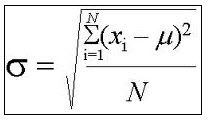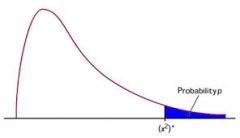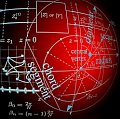Kruskal-Wallis Test Calculator
Instructions: This calculator conducts Kruskal-Wallis Test, which is non-parametric alternative to the One-Way ANOVA test, when the assumptions are not met for ANOVA. The purpose of the test is to assess whether or not the samples come from populations with the same population median.
Please use the spreadsheet below to provide the data for the groups you want to compare and the significance level \(\alpha\), and the results of the Kruskal-Wallis test will be displayed for you (Compare up to 5 groups. Please leave empty the columns that you will not use):
More about this Kruskal-Wallis Test Calculator
First of all, the Kruskal-Wallis test is the non-parametric version of ANOVA, that is used when not all ANOVA assumptions are met. The use of the Kruskal-Wallis test is to assess whether the samples come from populations with equal medians. We will need to use the Kruskal-Wallis test when the variable that is being measured (the dependent variable) is measured at the ordinal level, or when the assumption of normality is not met.
As with any other hypothesis test, the Kruskal-Wallis test uses a null and the alternative hypothesis. The null hypothesis is a statement that claims that all samples come from populations with the same medians, and the alternative hypothesis is that not all population medians are equal (observe that this does NOT imply that all medians are unequal, it implies that al least one pair of medians is unequal).
Assumptions for the Test
The main assumptions required to perform the Kruskal-Wallis test are:
- The dependent variable (DV) does not need to be interval, but it needs to be measured at least at the ordinal level
- The samples are selected independently
- The samples must come from populations with identical shape
The formula for the Kruskal-Wallis test is
\[H = \frac{12}{N(N+1)}\left( \frac{R_1^2}{n_1}+\frac{R_2^2}{n_2}+ \cdots + \frac{R_k^2}{n_k}\right) - 3(N+1)\]where N is the total sample sizes (the sum of the sample sizes), and \(R_i\) is the sum of ranks for sample \(i\), from a total of \(k\) samples. When all sample sizes are at least 5, the test statistic H is approximated by a Chi-Square distribution with \(k-1\) degrees of freedom. If any of the samples has less than 5 elements, special critical values need to be used to assess whether or not to reject Ho, based on the outcome of H.
What are some applications of Kruskal-Wallis Test?
There are many applications of the Kruskal Wallis test: The Kruskal-Wallis test is used when the assumptions for ANOVA are not met. But in case they are met, you should use instead our One-Way ANOVA calculator, because it has a higher statistical power.



